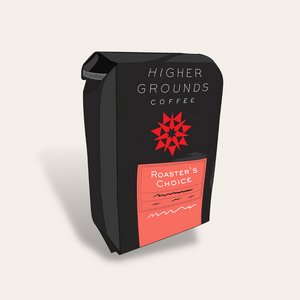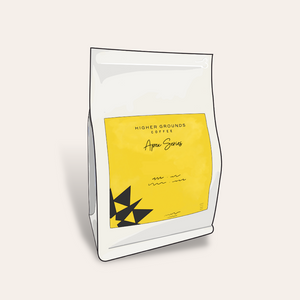Coffee roasting is a delicate art and a complex science, and it’s a process that we’re continually learning more about. Over the past decade plus, we’ve grown from two people using a borrowed roaster and packaging coffee in a basement into a full-blown roaster-retailer with a team of 20 who work tirelessly to share our farming partners’ exceptional coffee with the world. In the past few years, we’ve expanded our menu to include not only year-round signature offerings but seasonally-available coffees fresh from harvest. Our roasting repertoire has grown as well, now including a very wide range of roast profiles from light to dark. Currently we use a Diedrich IR-24 drum roaster.
In the beginning stages of roasting, the coffee beans lose water in the form of steam and first give off a hay-like aroma, then a more toasty smell. As they become hotter and hotter, they approach the first audible roast reaction (which sounds a bit like popcorn popping): first crack.
For our lightest roasts, the roasting process is stopped right at the end of first crack (somewhere around 380°F), at which the bean has approximately doubled in size, turned light brown, and lost about 5% of its weight. These coffees are generally characterized by a delicate body, highlighted acidity, and many origin-typical characteristics.
Our light-medium roasts are taken just beyond first crack but are cooled before reaching second crack--a time window of only about 15-30 seconds. At this point, the beans have slightly more body and a sweeter acidity, with still many origin characteristics remaining.
As the beans approach second crack, their structure begins to fracture. On the verge of second crack--which has a shallower sound, more like a snap--the beans have a slight oil sheen and softer edges. Here's some science for you: whereas first crack is the physical expansion of the coffee seed (as water and carbon dioxide split and CO2 outgassing begins), second crack is the physical fracturing of the coffee's cellulose matrix, organized cellulose that reacts to heat and not-so-organized cellulose that doesn't. Because every coffee is physically different--in size and density depending on varietal, origin, altitude--it's logical that each coffee's cell matrix behaves differently under these conditions. So second crack is a little more difficult to predict.
Most of our dark roasts are taken right to the verge of second crack. A longer, hotter roast results in a cup that exhibits more character of the roast than of the bean itself--toast, smoke, caramelization of sugars--so we aim to strike a balance that hits those notes pleasantly without sacrificing the coffee’s inherent nuances.
Our very darkest roasts are taken just into second crack. A few snaps are heard, and then the roast is stopped. Acidity and origin flavors decrease at this intense roast level, leaving a smooth, simple profile with a bittersweet, smoky finish.



